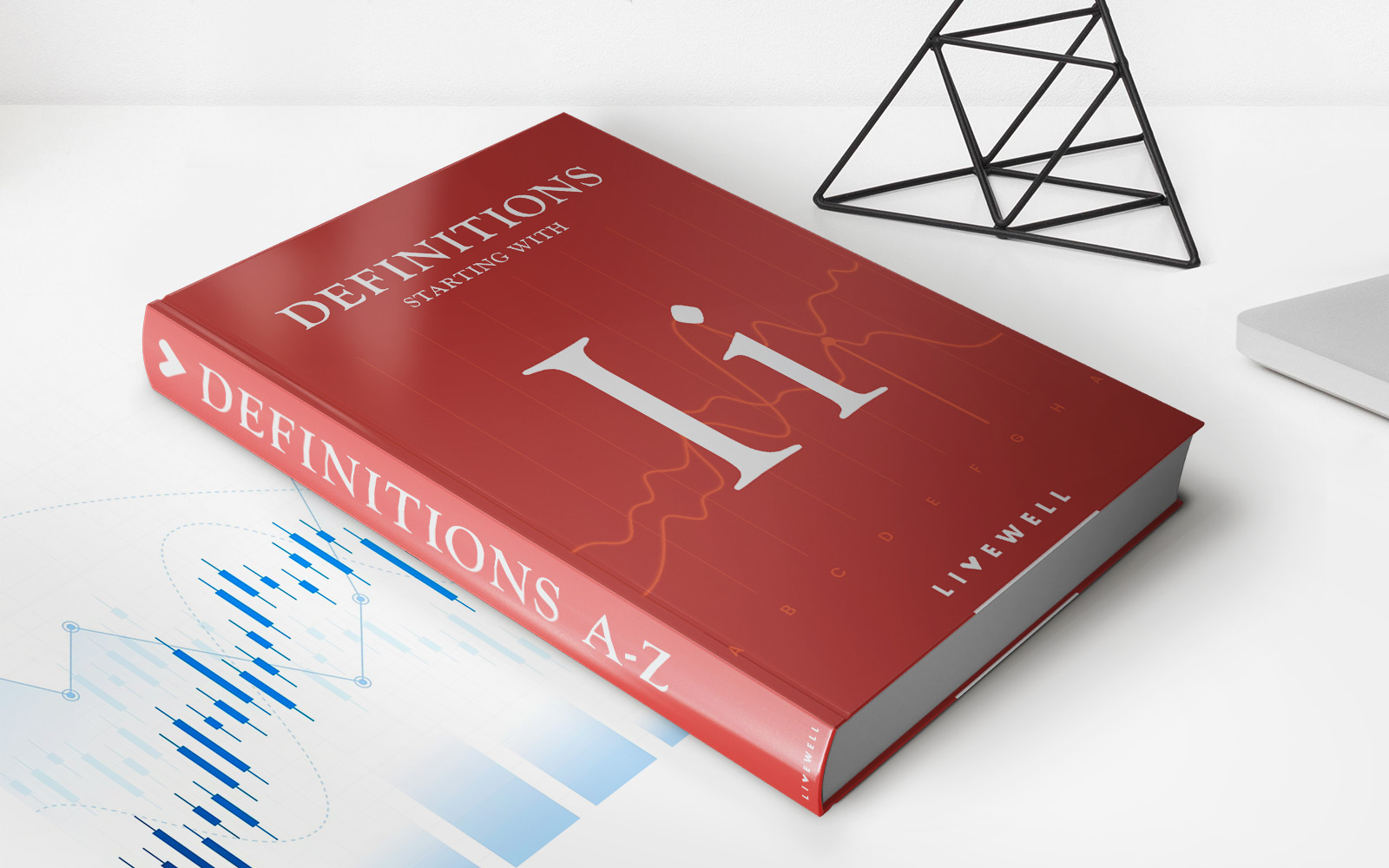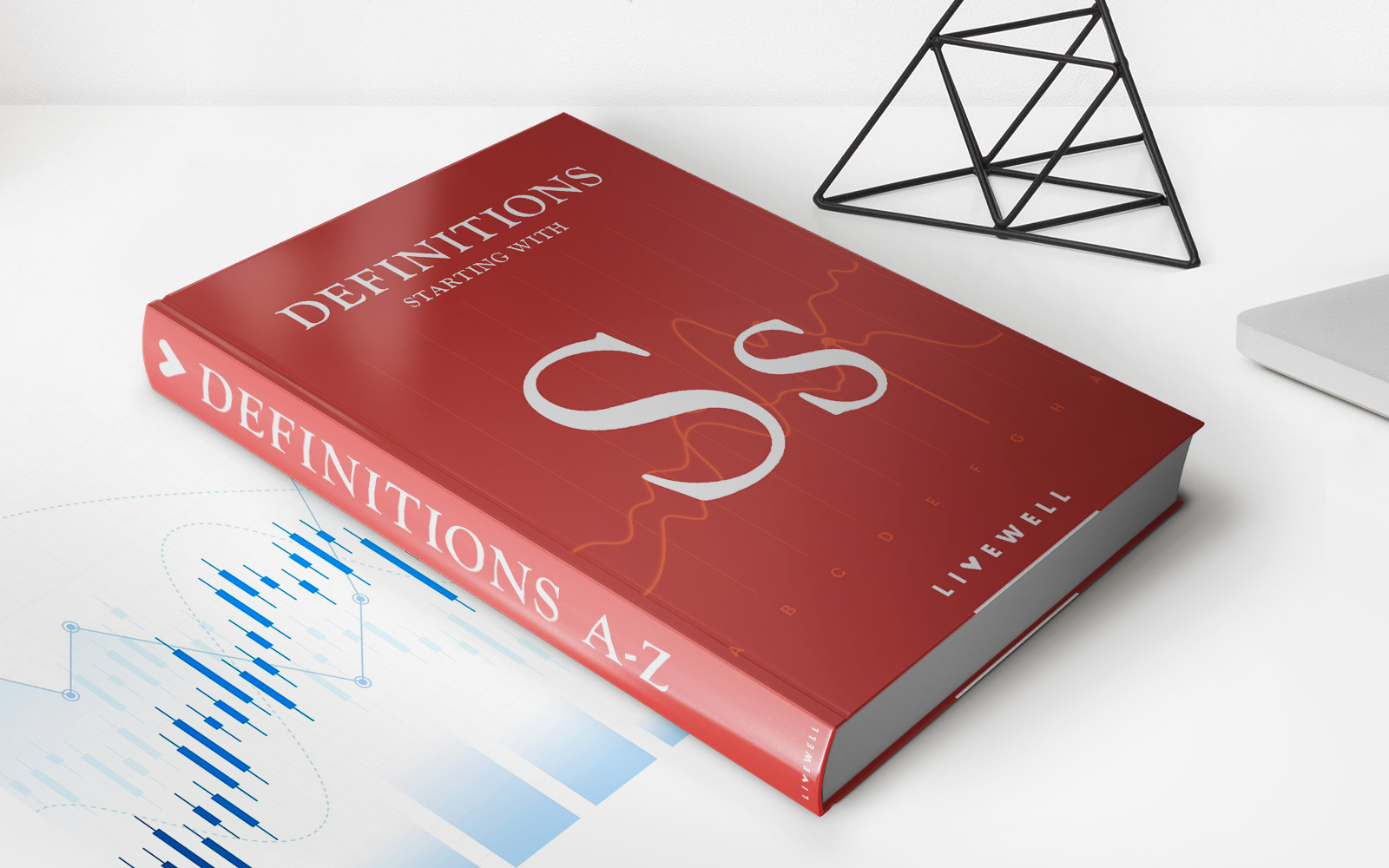

Finance
What Is IV In Stocks
Published: January 18, 2024
Learn about the significance of IV in stock trading and its impact on finance. Discover how understanding IV can help you make informed investment decisions.
(Many of the links in this article redirect to a specific reviewed product. Your purchase of these products through affiliate links helps to generate commission for LiveWell, at no extra cost. Learn more)
Table of Contents
Introduction
Welcome to the world of stocks and finance! If you’re new to the stock market, you may have come across the term “IV” or “Implied Volatility”. Understanding what IV means and its significance in the world of stocks is crucial for any investor or trader.
Implied Volatility, or IV, is a vital concept in the world of options trading. It is a crucial indicator of market expectations and plays a significant role in pricing options. IV is not something that can be observed directly but is derived from the options market, representing the market’s perception of the underlying security’s potential price swings.
As an investor or trader, understanding IV empowers you to make informed decisions and develop effective strategies. By analyzing IV, you gain insights into the market sentiment, expectations, and the perceived risk of the underlying asset.
In this article, we will delve into the concept of IV in stocks, discuss its importance, explore the factors that affect it, and examine ways to calculate it. We will also highlight how IV impacts options trading, explore strategies that can be based on IV analysis, and highlight the risks and limitations associated with it.
Whether you are a seasoned investor or just starting your journey into the world of stocks, understanding IV will provide you with the necessary tools to navigate the market with confidence and make informed investment decisions.
What is IV?
Implied Volatility (IV) is a measure used to assess the expected magnitude of price fluctuations of an underlying asset, typically a stock, over a certain period. It is an essential concept in options trading and is derived from the market prices of options contracts.
IV represents the market’s perception of the underlying asset’s volatility and is influenced by various factors, including investor sentiment, market conditions, economic events, and supply and demand dynamics. It indicates the level of uncertainty or risk associated with the underlying asset’s future price movements.
Although it is called “implied” volatility, IV is not a forecast or a predictive measure. Instead, it reflects the sentiment and expectations of market participants regarding the potential future price fluctuations of the underlying asset.
Options pricing models, such as the Black-Scholes model, use IV as one of the inputs to determine the theoretical value of an options contract. IV allows market participants to incorporate their expectations of future volatility into the pricing of options.
IV is expressed as a percentage and represents the annualized standard deviation of the underlying asset’s price. For example, an IV of 30% implies an expected annualized price movement of 30% for the underlying asset.
It is important to note that IV is specific to each options contract and can vary depending on the strike price and expiration date. Different options contracts on the same underlying asset can have different IV levels, reflecting different market expectations.
In summary, IV is a measure of the market’s expectations of future price volatility for an underlying asset. It is derived from the options market and plays a crucial role in options pricing and trading strategies.
Importance of IV in Stocks
Implied Volatility (IV) holds significant importance in the world of stocks and options trading. It provides valuable insights and aids in making informed investment decisions. Here are some key reasons why IV is important:
- Pricing of Options: IV is a crucial factor in determining the price of options contracts. Higher IV leads to increased option premiums since higher volatility implies a greater probability of larger price swings. Conversely, lower IV results in lower option premiums.
- Evaluating Market Sentiment: IV reflects the market’s perception of the future price volatility of an underlying stock. A higher IV indicates a more uncertain or volatile market sentiment, while a lower IV indicates a more stable market expectation. This information can help investors gauge market sentiment and make informed trading decisions.
- Identifying Opportunities and Risks: IV helps traders identify potential trading opportunities and risks. When IV is high, it suggests that options may be relatively expensive. Traders can capitalize on this by selling options to earn premium income. Conversely, when IV is low, it may indicate that options are relatively cheap, presenting buying opportunities for traders looking to profit from potential price movements.
- Assessing Potential Stock Price Movement: IV provides an estimate of the expected magnitude of price fluctuations in an underlying stock. By considering the IV, investors can assess the potential range of price movement and make better predictions about a stock’s future performance.
- Creating Options Trading Strategies: IV is a key consideration when designing options trading strategies. Traders often look for options with high IV levels to execute strategies such as straddles or strangles, which aim to profit from significant price swings. Conversely, low IV levels may prompt traders to implement strategies such as covered calls to generate income in relatively stable market conditions.
Overall, IV plays a crucial role in options pricing, assessing market sentiment, identifying opportunities and risks, predicting stock price movements, and formulating trading strategies. Understanding and analyzing IV empower investors and traders to make more informed decisions in the dynamic world of stocks.
Factors Affecting IV
Implied Volatility (IV) is influenced by a variety of factors that impact the pricing of options and the perception of future price volatility. Understanding these factors can help investors and traders interpret IV levels and make more accurate predictions. Here are some key factors that affect IV:
- Market Sentiment: The overall sentiment in the market plays a significant role in determining IV. During periods of uncertainty or heightened market volatility, IV tends to increase as investors perceive higher risks and expect larger price fluctuations.
- Supply and Demand Dynamics: The supply and demand for options contracts on a particular stock influence its IV. When there is high demand for options, IV tends to rise due to increased competition and higher expectations of future price volatility.
- Earnings Announcements: Earnings reports have a significant impact on IV. Prior to an earnings announcement, market participants anticipate potential surprises or deviations from expectations, leading to increased IV as traders anticipate larger price moves.
- Market Events and News: Significant market events such as geopolitical developments, economic releases, and regulatory changes can impact IV. These events can introduce uncertainty and affect market participants’ expectations of future price volatility.
- Time to Expiration: IV tends to rise as the expiration date of an option contract approaches. This is because the potential for larger price swings increases as the time remaining for the underlying stock to move in a particular direction decreases.
- Historical Volatility: Historical price volatility of the underlying stock can influence IV. If a stock has a history of large price swings, market participants may expect similar volatility in the future, leading to higher IV.
- Dividends: Dividend payments can impact IV, especially when they are expected to deviate from market consensus. High dividend payments can increase IV as traders anticipate larger price movements around the ex-dividend date.
It is important to note that these factors and their impact on IV can vary depending on the specific stock and prevailing market conditions. As a result, IV should be interpreted in light of these factors to arrive at a more accurate assessment of market expectations and potential price volatility.
Ways to Calculate IV
Calculating Implied Volatility (IV) can be done through various methods and models. While it is not possible to directly observe IV, several techniques can help estimate it. Here are some commonly used methods to calculate IV:
- The Black-Scholes Model: The Black-Scholes model is a widely used options pricing model that can help estimate IV. By inputting the current option price, strike price, time to expiration, risk-free interest rate, and underlying stock price, the model can solve for IV. However, the Black-Scholes model assumes certain assumptions about market conditions and may not be applicable in all scenarios.
- Historical Volatility: Historical volatility measures the magnitude of past price fluctuations of the underlying asset. By calculating the standard deviation of historical returns over a certain period, traders can estimate the historical volatility. While historical volatility provides insights into past price movements, it may not accurately reflect future volatility and market expectations.
- Implied Volatility Indexes: Implied Volatility Indexes, such as the CBOE Volatility Index (VIX), are calculated based on the prices of options contracts. These indexes represent the market’s expectations of future volatility and provide a measure of overall market sentiment. Traders can use these indexes as an estimate of IV for broader market analysis.
- Option Pricing Software: Various option pricing software and platforms offer built-in tools to calculate IV. These tools use mathematical models, such as the Black-Scholes model, to estimate IV based on the input data. Traders can input the option price, strike price, expiration date, and other relevant parameters to obtain the estimated IV.
It is important to note that IV is an estimated measure and can vary depending on the chosen methodology and assumptions. Traders often compare IV across multiple options contracts to identify opportunities or discrepancies in pricing.
By utilizing these estimation methods and tools, traders can gauge IV and incorporate it into their decision-making process. However, it is essential to remember that IV is just one piece of the puzzle and should be analyzed in conjunction with other technical and fundamental factors to make informed trading decisions.
How IV Impacts Options Trading
Implied Volatility (IV) has a significant impact on options trading, influencing option prices, trading strategies, and risk management. Here are some ways in which IV affects options trading:
- Option Premiums: IV directly affects the pricing of options contracts. When IV is high, option premiums tend to be more expensive, as traders expect larger price fluctuations. Conversely, when IV is low, options tend to be cheaper. Traders can take advantage of high IV by selling options to collect premium income or look for buying opportunities when IV is low.
- Options Strategies: IV plays a crucial role in determining which options strategies traders may employ. High IV levels may prompt traders to use strategies such as straddles or strangles, which involve buying both a call and a put option simultaneously. These strategies aim to profit from significant price swings that may occur due to high IV. On the other hand, strategies like covered calls, which involve selling call options against underlying stock positions, may be used when IV is low to generate premium income.
- Volatility Trading: IV provides opportunities for traders to engage in volatility trading. By taking positions based on the expected future volatility, traders can bet on the IV levels increasing or decreasing. For example, traders can buy options when IV is low, anticipating an increase in IV and subsequent option price appreciation. Alternatively, traders may sell options when IV is high, expecting IV to decrease, and the options premiums to decline.
- Option Strategies Around Events: Events such as earnings reports, mergers, or product launches can significantly impact IV. Traders often take positions before such events by employing strategies like straddles or strangles. These strategies involve buying both a call and a put option to profit from potential price swings following the event.
- Risk Management: IV is instrumental in assessing and managing risk in options trading. High IV levels indicate greater uncertainty and potential for larger price swings, which translates to higher market risk. Traders may adjust their position sizing or employ risk management techniques like stop-loss orders to mitigate potential losses during periods of elevated IV.
Understanding the impact of IV on options trading allows traders to adapt their strategies and capitalize on market conditions. IV provides valuable insights into market sentiment, option pricing, and the expected magnitude of price movements. By incorporating IV analysis into their decision-making process, traders can enhance their ability to profit from options trading opportunities while effectively managing risk.
Strategies Based on IV
Implied Volatility (IV) is a key component in formulating options trading strategies. By considering IV levels, traders can develop strategies that capitalize on expected price movements and market sentiment. Here are some common strategies based on IV:
- Straddles and Strangles: These strategies are employed when traders anticipate significant price movements, typically around an event or announcement. A straddle involves buying both a call option and a put option at the same strike price and expiration date. A strangle is similar but involves buying call and put options at different strike prices. Both strategies aim to profit from substantial price swings and can be useful during periods of high IV.
- Iron Condors: An iron condor strategy is used when traders expect a period of low volatility. It involves selling an out-of-the-money call spread and an out-of-the-money put spread simultaneously. The goal is for the underlying asset to remain within a specific price range until expiration, allowing traders to collect premium income from the options sold.
- Covered Calls: Selling covered calls is a conservative strategy that can be used when IV is low. It involves selling call options against an existing stock position. By selling covered calls, traders generate premium income and potentially enhance their returns if the stock price remains below the strike price by expiration.
- Calendar Spreads: Calendar spreads are implemented when traders anticipate a change in IV. This strategy involves buying and selling options with the same strike price but different expiration dates. By capitalizing on the time decay of options, traders can profit from IV changes affecting the prices of the options contract.
- Directional Trades: IV can also be used to guide directional trades where traders speculate on the price movement of the underlying asset. For example, if a trader expects IV to increase, they may buy options to benefit from an anticipated rise in option prices due to higher market volatility.
It is important to note that implementing strategies based on IV requires careful analysis, risk management, and a thorough understanding of the market conditions. Traders should consider factors such as time to expiration, strike price selection, and potential profit and loss scenarios when executing these strategies.
By utilizing strategies based on IV, traders can align their positions with market expectations, capitalize on volatility, and potentially enhance their trading results.
Risks and Limitations of IV Analysis
While Implied Volatility (IV) analysis provides valuable insights for options traders, it is important to understand the risks and limitations associated with its use. Here are some key considerations:
- Market Expectations: IV is derived from the prices of options contracts and represents the market’s expectations of future price volatility. However, these expectations may not always accurately predict actual price movements. IV analysis relies on the assumption that market participants have an accurate assessment of future volatility, which may not always be the case.
- Over/Underpriced Options: IV analysis assumes that options are priced fairly based on market expectations. However, options can be either overpriced or underpriced relative to true volatility levels. Traders should be cautious of overpaying for options with high IV or underestimating the value of options with low IV.
- Options Greek Sensitivities: IV analysis does not take into account the full range of options Greeks, which measure the sensitivity of options prices to factors such as changes in the underlying stock price, time decay, and changes in interest rates. Traders should consider other option pricing factors and Greeks, such as delta, theta, and vega, to gain a more comprehensive understanding of options pricing and risk.
- Changes in IV: IV is not a static parameter and can change over time. Traders should be aware that IV levels can fluctuate due to changing market conditions, events, or shifts in sentiment. A strategy based on high IV may experience diminishing returns if IV decreases rapidly.
- Single-Metric Analysis: Relying solely on IV analysis as the basis for trading decisions may not provide a complete picture. Traders should consider other technical and fundamental factors, such as chart patterns, company earnings, and economic indicators, to validate their trading strategies and assess the overall market environment.
- Liquidity and Execution: Options with low liquidity may have wider bid-ask spreads, making it more challenging to execute trades at desired prices. Traders should be mindful of liquidity considerations when trading options based on IV analysis.
It is essential for traders to approach IV analysis with a critical mindset, understanding that it is just one tool among many in the options trading arsenal. Combining IV analysis with a comprehensive understanding of options pricing, risk management, and market dynamics can help traders make more informed trading decisions and manage their exposure effectively.
Conclusion
Implied Volatility (IV) is a crucial concept in the world of options trading, providing valuable insights into market sentiment, option pricing, and expected price volatility. Understanding and analyzing IV empowers investors and traders to make informed decisions and develop effective strategies.
Throughout this article, we have explored the definition of IV and its significance in the stock market. We’ve discussed the factors that influence IV, including market sentiment, supply and demand dynamics, and market events. We’ve also covered various methods to calculate IV, such as the Black-Scholes model, historical volatility, and implied volatility indexes.
Moreover, we’ve highlighted the impact of IV on options trading, including its influence on option premiums, strategies such as straddles and covered calls, and risk management. By incorporating IV analysis into their trading decisions, traders can align their positions with market expectations and potentially improve their trading outcomes.
However, it is important to recognize the risks and limitations of IV analysis. Market expectations may not always accurately predict actual price movements, and options can be over or underpriced relative to IV levels. Additionally, IV analysis should be complemented with other factors such as options Greeks and overall market conditions.
In conclusion, IV analysis is a valuable tool for options traders but should be used as part of a comprehensive approach to trading. By understanding IV and its implications, traders can navigate the stock market with more confidence, make informed investment decisions, and potentially enhance their trading results.














